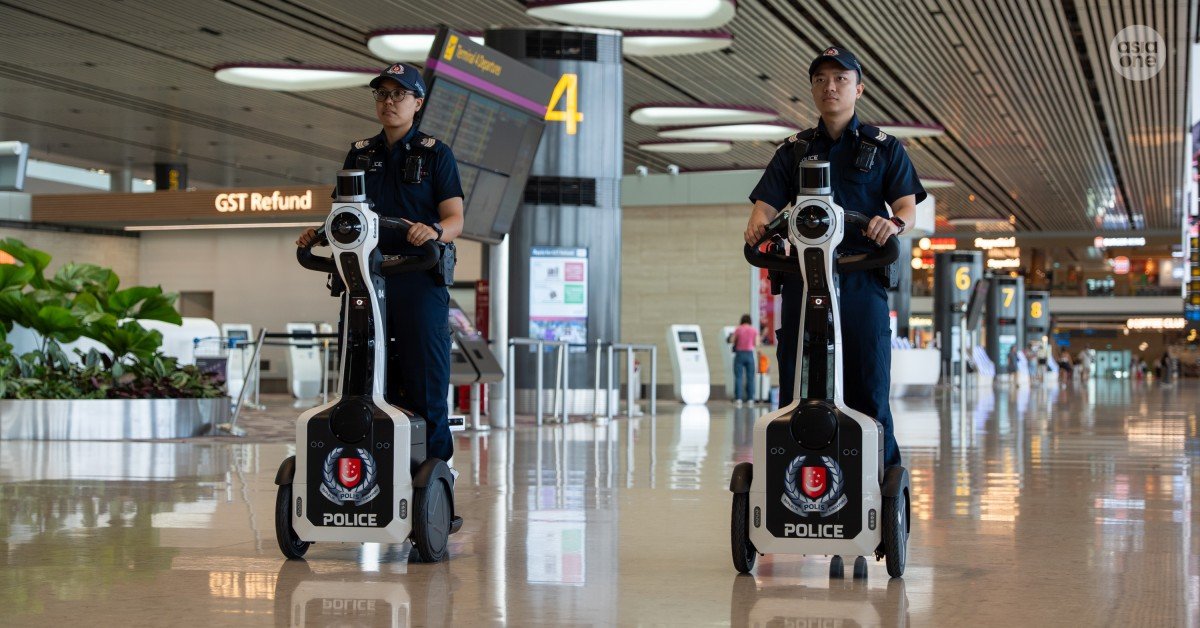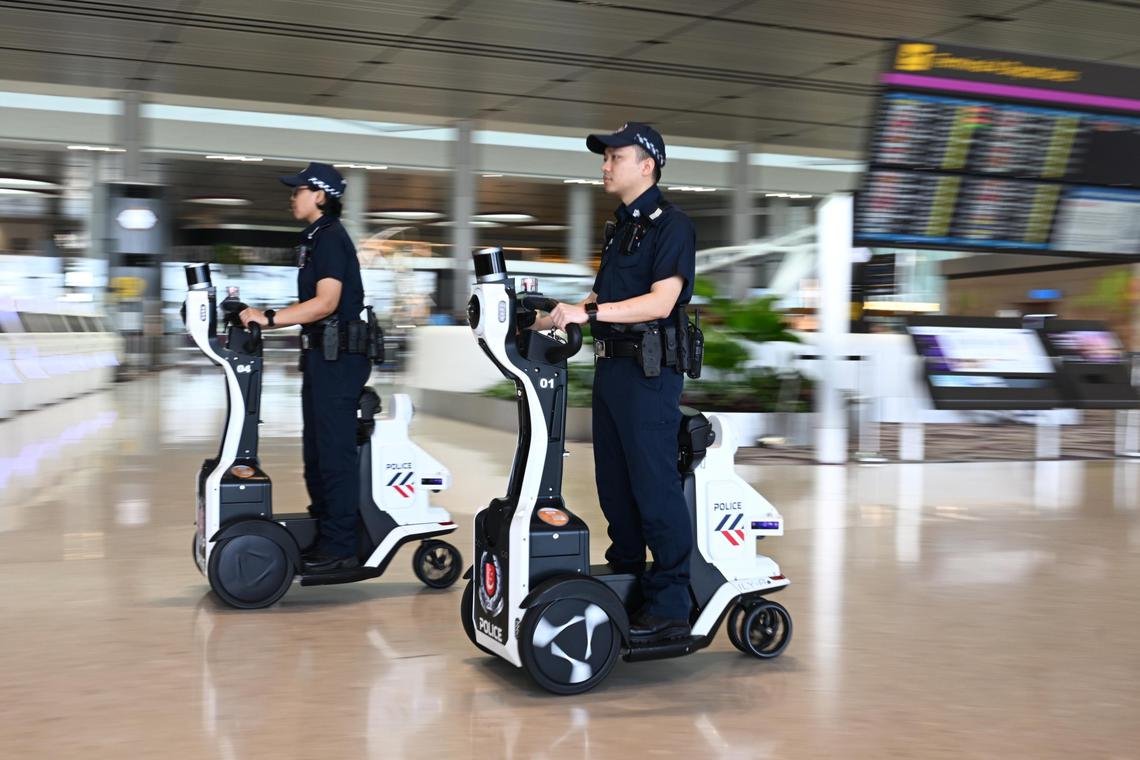Ride & Mobility
Getting on board with shared autonomous vehicles

Shared autonomous vehicles (AVs) now operate in more than ten cities worldwide, including Beijing, Oslo, Phoenix, and San Francisco. More deployments are planned in other regions as AVs with level four capabilities—those that can handle most functions without human intervention—become increasingly sophisticated.
While engineers have overcome many technological hurdles for autonomous mobility and continue to make strides, industry leaders should also address other issues—especially those related to the economics of these offerings—to help shared AVs generate initial traction. One major goal should involve increasing uptake in urban areas because the economics in other regions are less attractive. We reviewed the affordability and pricing of shared AVs, as well as concerns related to safety, accessibility, and sustainability, to determine how the market might evolve.
A dual mission: Affordability and profitability
It’s a balancing act. Shared autonomous mobility must be less expensive or more convenient than conventional urban transportation options to attract riders, but the price must be high enough that all businesses along the value chain can profit. Satisfying both objectives simultaneously can be difficult, especially if other ride hailing services are available.
To determine how pricing for shared AV services might evolve, we first examined costs in three separate areas: unit costs, city-level costs, and global costs. Combined, these costs could amount to $8.20 per vehicle mile traveled (VMT) for a typical city in the United States with 1,000 vehicles in operation at a given time. But when we analyzed how total costs might evolve, we found that they could potentially fall to about $1.30 by 2035, assuming large-scale operations (Exhibit 1).
Factors contributing to the improvement are detailed below.
Vehicle
This category includes all costs and depreciation for a single self-driving system with level four capabilities. These costs account for about 20 percent of total costs today, or $1.64 per VMT, but they could decline by about 85 percent by 2035. The major factors behind the decrease include the following:
- Greater vehicle utilization. The greatest cost reductions are expected from increased use of shared AVs with level four capabilities. The uptick will largely result from greater consumer adoption, increased utilization, wider operating areas, and improved dispatching algorithms.
- AV technology. Companies will likely manufacture some system components, including sensors and high-performance computers, at greater scale, which will lower costs. Other gains could come as engineers simplify the hardware and software for AV kits. For instance, the kits could contain fewer sensors and have a lower storage and compute capacity. Software and data needs will likely be less complex, and engineers could optimize both algorithm performance and software update processes to minimize maintenance and repair needs. Despite their lower costs, the simplified AV kits should maintain or improve performance.
- Purpose-built vehicles. These vehicles, as well as their AV kits, would have a longer lifetime. To create them, companies would focus on designs that reduce wear or downtime. They could also improve system integration as volumes rise or use replaceable batteries that are optimized for each use case.
Local operations
One-time and running costs for location-specific operations include those for operation-design-domain mapping, algorithm localization, and validation efforts. Providers should also budget for fleet management, charging infrastructure, launch management and preparation, and other infrastructure-related expenses. Local operations now account for about 50 percent of the total cost of shared autonomous mobility, or about $4.14 per VMT.
If companies increase their fleet size, they could benefit from economies of scale that reduce their local operational costs. In addition, they may be able to reduce local operational costs by about 70 percent by 2035 through improvement initiatives. Improvements in daily operations are expected to deliver the most benefits, and important levers might include automating charging and cleaning procedures, standardizing sensor maintenance and repair processes, creating partnerships with existing mobility and infrastructure operators to share hub facilities, and reducing “empty” miles by optimizing the number and location of hubs and by deploying vehicles based on data. Providers might also consider establishing or increasing access to rideshare networks and platforms to maximize customer convenience and rider volumes.
Beyond daily operations, providers may also decrease local costs through better R&D and launch management. For instance, they might create a specialized team composed of employees who have successfully managed launches in multiple locations to oversee future launches. They could also increase the efficiency of data collection, performance simulations, and other R&D tasks.
Global deployment
Global deployment costs, such as those for launch management teams, now represent about 30 percent of the total cost of shared autonomous mobility, or $2.40 per VMT, but they could potentially decline by about 85 percent by 2035.
As with local operations, improvements in AV technology account for much of the cost reduction. Companies may decrease central data and compute needs as their scale and efficiency rise, and they may also lower hardware expenses through cost-optimized sourcing. Within daily operations, providers may reduce costs by improving algorithms, optimizing vehicle-control-center processes, and enhancing operator interfaces—actions that will minimize the need for vehicle-control-center operators to intervene during rides.
Currently, most shared AV providers operate on a relatively small scale and cover a limited area. As they grow in scale and expand their coverage area, they might benefit from centralizing certain functions, including finance, procurement, HR, and legal, which may be less costly than having independent groups at individual locations. Companies may also explore options for automating or off- or nearshoring some central tasks.
Safety: Improving systems while building consumer confidence
Surrendering vehicle control to an autonomous system requires great trust in the underlying technology, and many people might be understandably wary the first time a driverless vehicle arrives at their door. Exacerbating their concerns, the media has recently reported on multiple incidents in which AVs behaved erratically in traffic, were involved in accidents, or injured pedestrians. Regulators are closely watching developments, and reporting requirements may become more stringent across the board.
As shared AV operators try to scale their operations, they will need to address lingering safety concerns. In a 2024 McKinsey consumer survey, 53 percent of respondents stated that safety concerns were a major roadblock to more widespread AV adoption (Exhibit 2). The need for better road infrastructure to support AVs was a distant second at 35 percent. Although safety issues still loom large, the percentage of respondents citing it as a concern was lower than the 56 percent reported in the 2022 survey.
Companies are continuing to improve safety by perfecting their AV hardware and software through improved algorithms and greater testing and validation. Their leaders are also increasingly viewing safety as more than a technical issue, and some are creating dedicated safety organizations and establishing frameworks with third parties to improve safety standards.
Better governance and reporting mechanisms could also build trust in the safety of AVs. For instance, companies could frequently communicate with policymakers about important developments or work with regulators to establish standard frameworks for monitoring and tracking the safety of self-driving systems. To allay consumer concerns, companies may want to educate the public about ongoing advances in autonomous driving, as well as the social, economic, and environmental advantages of AVs.
Accessibility: Ensuring that certain groups can use AVs
As shared AV ridership grows, operators must guarantee equitable access for populations that might have limited driving abilities. Some early leaders are already minimizing obstacles for older adults and people with disabilities through the following:
- Barrier-free vehicle designs. Providers ensure that some vehicles in their fleet are wheelchair accessible to allow riders more independence.
- Partnerships. Community organizations that advocate for people with disabilities have worked with shared-AV operators to help shape and test accessible ride hailing services.
With such accommodations, using a shared AV could become just as convenient as owning a private vehicle or hailing a taxi. For older individuals and those with disabilities, the service could provide greater independence and decrease isolation by allowing them to leave their homes more often.
For underserved groups with limited transportation options, shared AVs might provide another affordable transportation option if prices continue trending down. For instance, they might operate in areas where human rideshare drivers tend to decline rides because of safety concerns or other issues. Adding incremental routes for AVs is less expensive than for driver-based services, allowing providers to scale up their operations more quickly.
Sustainability: Even further emissions reductions
Most autonomous fleets contain battery electric vehicles (BEVs). Shared BEVs produce 85 to 98 percent fewer emissions per passenger mile traveled than private diesel vehicles. A recent McKinsey analysis suggests that companies could reduce current BEV emissions by about 71 percent by making improvements throughout the entire vehicle life cycle, from the design phase through operations (Exhibit 3). Supply chain improvements, such as using green components and energy, could account for about 42 percent of the decrease (or 11 grams of CO2 per passenger kilometer).
One caveat: Although shared AVs may rely on electric batteries, their increased use could exacerbate road congestion and raise the number of “deadhead” miles—those with no passenger on board. To ensure that shared fleets capture maximum sustainability benefits, regulators and industry leaders must acknowledge and address these potential complications.
Although shared AVs are now a reality, they still draw a second look, even in cities where they are well established. For these vehicles to gain scale and expand into new locations, stakeholders cannot just strive for technological improvements; they must also focus on affordability, safety, accessibility, and sustainability while ensuring that all businesses along the value chain can profit. Many OEMs and others are already striving to improve these dimensions, and their efforts could make shared AVs an essential component of the urban mobility mix.
Ride & Mobility
Leading Tech Firms Accelerate Development of Consumer-Focused Robotaxi Services

Major technology and mobility companies are advancing their initiatives in the robotaxi sector, with a focus on delivering driverless vehicle services to consumers. These efforts are part of a broader industry shift toward autonomous transportation, driven by advances in artificial intelligence and vehicle automation.
Tesla Pioneers Fully Autonomous Ride-Sharing Platform
Tesla has been at the forefront of the robotaxi movement, with CEO Elon Musk outlining a vision for a fully autonomous ride-hailing service. The company has been testing its Full Self-Driving (FSD) software in controlled environments and is preparing for a phased rollout of its robotaxi fleet. Tesla’s approach emphasizes over-the-air software updates and a vehicle fleet that can transition from personal ownership to shared mobility services.
Alphabet Expands Waymo’s Urban Reach
Alphabet’s autonomous driving division, Waymo, continues to expand the geographic footprint of its robotaxi service. The company has been testing its autonomous vehicles in multiple cities and is working on integrating the service into a broader mobility network. Waymo’s strategy focuses on high-density urban areas, where the demand for ride-sharing is strongest. The service is designed to operate with minimal human intervention, relying on advanced sensor systems and AI decision-making.
Baidu’s Apollo Launches Commercial Robotaxi Pilot
Baidu’s Apollo platform has launched a commercial robotaxi pilot, offering autonomous rides to the public in select cities. The service is part of Baidu’s broader smart transportation initiative and is supported by partnerships with local governments and automotive manufacturers. Apollo’s robotaxis are equipped with the company’s proprietary AI and sensor technology, which enables real-time navigation and passenger safety monitoring.
Uber Integrates Autonomous Vehicles into Ride Network
Uber is integrating autonomous vehicles into its existing ride-hailing platform, aiming to reduce operational costs and improve service efficiency. The company has been conducting trials with self-driving vehicles and is working on a model where drivers and autonomous vehicles coexist within the same app. Uber’s long-term goal is to transition to a fully autonomous fleet, with a focus on maintaining customer experience and safety standards.
Amazon Explores Last-Mile Delivery and Ride-Sharing Synergies
Amazon is exploring the use of autonomous vehicles not only for delivery services but also for ride-sharing. The company has been testing small, electric autonomous vehicles for last-mile delivery and is now looking to expand into the passenger transportation space. Amazon’s approach leverages its existing logistics infrastructure and AI capabilities to create a seamless mobility experience.
Industry Momentum Reflects Confidence in Autonomous Future
The collective efforts of these companies signal growing confidence in the commercial viability of robotaxi services. While challenges such as regulatory approval, public acceptance, and technical refinement remain, the industry is moving toward a future where autonomous vehicles play a central role in urban transportation. The integration of AI, cloud computing, and vehicle automation is enabling a new era of mobility, with major tech firms leading the charge.
Ride & Mobility
Police test ride-hailing robot to patrol Changi Airport T4 , Singapore News

The Singapore Police Force’s Airport Police Division (APD) and Home Team Science and Technology Agency (HTX) have been piloting a new police patrol robot named Gibson since early July.
This indoor robot, which was built to enhance police presence and improve officers’ mobility, can also be used as a means of transport.
During the demonstration to the media on Wednesday (July 16), Gibson operated within Changi Airport Terminal 4 in its dual-mode operation — autonomous and ride.
The autonomous mode compromises of in-depth cameras, 3D LiDAR (Light Detection and Ranging) cameras and Sonar (Sound Navigation and Ranging) techniques that allow Gibson to determine its location, safely navigate the indoor environment and avoid collisions.
This indoor robot is also equipped with a “safety bubble” feature, which functions as a proximity detector. This means it can stop and sound a horn when it detects that someone is too close or obstructing its path.
On the other hand, the ride mode allows the robot to travel to an officer’s location autonomously through a ride-hailing function.
This function is developed in-house by HTX, and it is especially critical for APD’s Ground Response Force officers as it frees them to focus on incident response while enhancing mobility and operational readiness within the airport.
“Its autonomous mode will allow officers not to worry about having where to park Gibson, where it can continue to patrol in the airport without having to return to its designated parking lot,” said Superintendent of Police Patrick Pang, an operations officer for planning and readiness from APD.
He also mentioned that the ride mode is designed to “allow officers to summon for Gibson without having to manually search for one”.
Officers riding it will be able to travel large indoor areas, thus improving their incident response time.
Human-robot collaboration
“Gibson was developed as part of our ongoing efforts in advancing human-robot collaboration where Home Team officers can team up with robotics systems to carry out patrol missions and to respond to incidents collaboratively,” said Seah Qi Yan, an engineer from HTX Robotics, Automation and Unmanned Systems.
Gibson was developed through a collaboration with the A*STAR Institute for Infocomm Research.
HTX plans to move beyond traditional patrol robots that work on their own, aiming to build smarter, more connected robots that can react to their surroundings and take input from Home Team officers.
Gibson is not the first robot that has been used by the police in Changi Airport, but this is the first rideable one. It is not known when it will become operational.
When AsiaOne was invited to test out Gibson, we found the ride to be unexpectedly smooth. Although there were some shaky moments when approaching a turn, the robot handled it well.
[[nid:719449]]
Ride & Mobility
2-in-1 airport police robot on trial can patrol and serve as PMD with ride-hailing feature

SINGAPORE – A police patrol robot that doubles as a personal mobility device (PMD) for officers is being trialled at Changi Airport Terminal 4.
The autonomous robot, called Gibson, is outfitted with multiple cameras and sensors to help it avoid obstacles and people. Officers can also use it for transportation, to cover long distances at the airport quickly.
The Home Team Science and Technology Agency (HTX) developed Gibson in collaboration with the A*Star Institute for Infocomm Research. The trial began in early July.
“Gibson was inspired by the concept of creating a buddy robot for our officers,” said HTX engineer Seah Qi Yan from the Robotics, Automation and Unmanned Systems Centre of Expertise. “They can use it as a PMD in their operations and transform it into an autonomous robot when not in use.”
Gibson was developed to advance human-robot collaborations in the Home Team, Ms Seah added.
Its ride-hailing function is a key feature that was developed in-house. Using their phone or tablet to access the robotics platform, officers can call for an available robot to meet them at a nearby pickup point.
While travelling aboard Gibson, they can select the autonomous function to get them to their destination as they tend to other matters, such as reviewing incidents on their devices. Alternatively, officers may choose to drive it manually by using a physical key.
Two of the robots were shown to the media on July 16 at Terminal 4.
Each robot has a battery life of about four hours, and has safety features such as automatically stopping if someone attempts to get on it while it is moving. Attempts to block Gibson intentionally as it is patrolling will cause it to sound a horn.
Named after inventor Arthur Hugo Cecil Gibson, who made the first motorised scooter in the early 1900s, it is the second type of police robot to be used at the airport.
The first police patrol robots were introduced at the airport in April 2023, after more than five years of trials and smaller-scale roll-outs.
Superintendent of Police Patrick Pang, an operations officer for planning and readiness from the Airport Police Division, said Gibson will complement existing police patrols and enhance the police presence at the airport.
He said: “The ride-hailing function makes it convenient for officers to summon Gibson without having to manually search for one.
“And with the autonomous mode, our officers do not have to worry about where to park, as it can resume its patrols without returning to a designated parking lot.”
-

 AI in Travel16 hours ago
AI in Travel16 hours agoAI Travel Revolution: Must-Have Guide to the Best Experience
-

 Brand Stories1 week ago
Brand Stories1 week agoHow Elon Musk’s rogue Grok chatbot became a cautionary AI tale
-

 Brand Stories2 weeks ago
Brand Stories2 weeks agoVoice AI Startup ElevenLabs Plans to Add Hubs Around the World
-

 Asia Travel Pulse2 weeks ago
Asia Travel Pulse2 weeks agoLooking For Adventure In Asia? Here Are 7 Epic Destinations You Need To Experience At Least Once – Zee News
-

 AI in Travel2 weeks ago
AI in Travel2 weeks ago‘Will AI take my job?’ A trip to a Beijing fortune-telling bar to see what lies ahead | China
-

 Brand Stories2 weeks ago
Brand Stories2 weeks agoChatGPT — the last of the great romantics
-

 The Travel Revolution of Our Era1 month ago
The Travel Revolution of Our Era1 month agoCheQin.ai Redefines Hotel Booking with Zero-Commission Model
-

 Brand Stories2 weeks ago
Brand Stories2 weeks agoHumans must remain at the heart of the AI story
-

 Destinations & Things To Do16 hours ago
Destinations & Things To Do16 hours agoUntouched Destinations: Stunning Hidden Gems You Must Visit
-

 Brand Stories2 weeks ago
Brand Stories2 weeks agoChildproofing the internet is a bad idea
